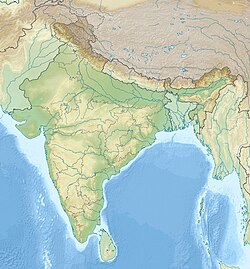| Kalnai River | |
|---|---|
 | |
| Location | |
| Country | India |
| Flows through | Donadi-Thathri in Jammu and Kashmir |
| Physical characteristics | |
| Source | Kalgoni Stream |
| • location | Donadi |
| • coordinates | 33°08′01″N75°51′12″E / 33.133750°N 75.853266°E |
| Mouth | Chenab River |
• location | Thathri |
• coordinates | 33°08′43″N75°47′28″E / 33.14528°N 75.79111°E |
The Kalnai River is a tributary of the Chenab River in the Bunjwah region bordering Kishtwar and Doda districts in Jammu and Kashmir. [1] [2] An under construction 48MW Lower Kalnai hydroelectric project is located at Donadi on this river. [3]





